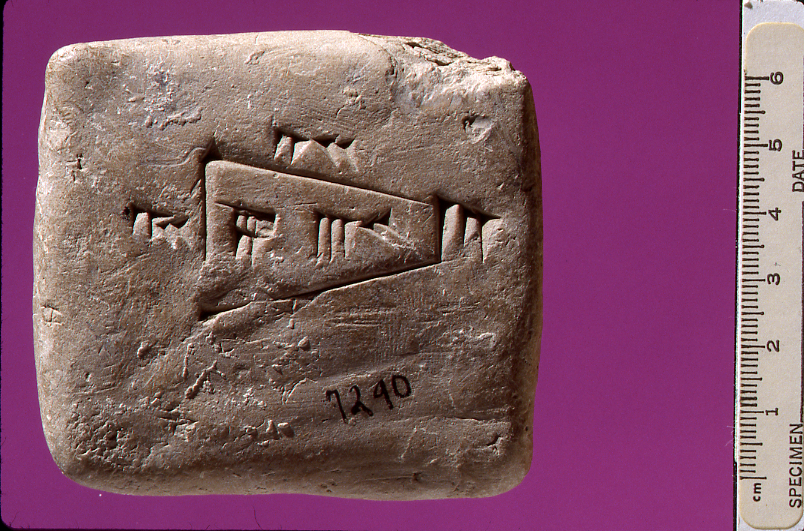Notes
- In order to get full credit in the open ended questions, you need to spend some time reflecting upon and writing your answers. In most of these problems, the probability that a one-sentence answer will get full credit is close to 0 (and so will be what you learn from the exercise)
- Make sure you show all your work on the problems that require it so. Otherwise, even if you give a correct answer, if you do not explain how you obtained it, you'll get very little or no credit.
- It would be great if you discussed ideas with your classmates. The write-up, however, must be done individually.
- Recall that the slides of the lectures can be found here.
Problems
- Multiply 37 by 40 the Ancient Egyptian way.
- Calculate with 43 so as to obtain 1935. (Part of the problem consists in interpreting what is asked in Ancient Egyptian style)
- Solve by the method of false position: a quantity and its 1/5 added together become 15. What is the quantity? Explain the steps.
- Explain why the Egyptian multiplication algorithm works. In particular, remember that to multiply A times B the Egyptian way, one writes B as a sum of certain powers of 2, where each power of two appears at most once. Is that always possible? If so, why? Once that B is written as a sum of powers of two, why is that adding the corresponding doubles (and doubles of doubles, and ...) gives the right answer?
-
Recall the problem from the Rhind papyrus:
A circular field has diameter 9 khet. What is its area? The solution was:
Take away thou 1/9 of it, namely 1; the remainder is 8. Make thou the
multiplication 8 times 8; becomes it 64; the amount of it, this is, in area 64 setat. (A khet is a unit of length. A setat is a unit of area equal to one khet squared)
- Find the formula of the area of the circle that the scribe would have obtained by starting with a circle of diameter d, instead of a circle of diameter 9. (Hint: Start by taking away 1/9 of the diameter, that is d/9.)
- The area of a circle is a constant, π, times the radius of the circle squared.The Egyptians used another constant -very close to π but not exactly π- to compute the area of the circle. What is that constant?
- Write the fractions 3/10 and 16/25 in the cuneiform Babylonian number system. Justify your steps.
- In the figure below we see two rows of a multiplication table by a number X, written in cuneiform. The symbol that repeats in the first column (on the left) can be roughly translated as ``times''. Translate the symbols of the second and third columns and determine what is the number X. (Hint: The number X is not an integer)
- Using the Babylonian algorithm to approximate a square root, find an approximation of the square root of 5, starting with 2 as the "guess". (In the notation we used in class, N=5, a=2). Explain your steps with drawings.
- In ancient Babylonia, the area of a trapezoid was computed as average of the sides multiplied by the average of the bases. In the tablet above a trapezoid is displayed. The two non-parallel, opposite sides, have the same length, which is displayed over the top side. Compute the area using the ancient Babylonian formula and give the result in Hindu-Arabic numerals.
- Show (with an example) that the formula used in Babylon to compute the area of a quadrilateral is not correct.
- Compare the positional number system used in Babylon and the additive number system used in Egypt. What are the advantages and disadvantages of each one of them? In particular, which system is more suitable for performing arithmetic operations (addition, subtractions, multiplication and division) .
- List at least three methods used by ancient civilizations to record numbers, specifying the materials and number system used to perform these recordings.

Three rows of a multiplication table

A Mesopotamian Geometrical Tablet. Credit image: Frank Swetz, Mathematical Treasure: Old Babylonian Area Calculation, Convergence.
Sample Problems Quiz 2: Egypt
Make sure you show all your work. Even if the answer is correct, if you do not explain how you got it, you’ll have very little or no credit.
Four of the five problems about Ancient Egyptian MathematicsSample Problems for Quiz 3: Mesopotamia
Make sure you show all your work. Even if the answer is correct, if you do not explain how you got it, you’ll have very little or no credit.
Four of the five problems about Ancient Babylonian Mathematics